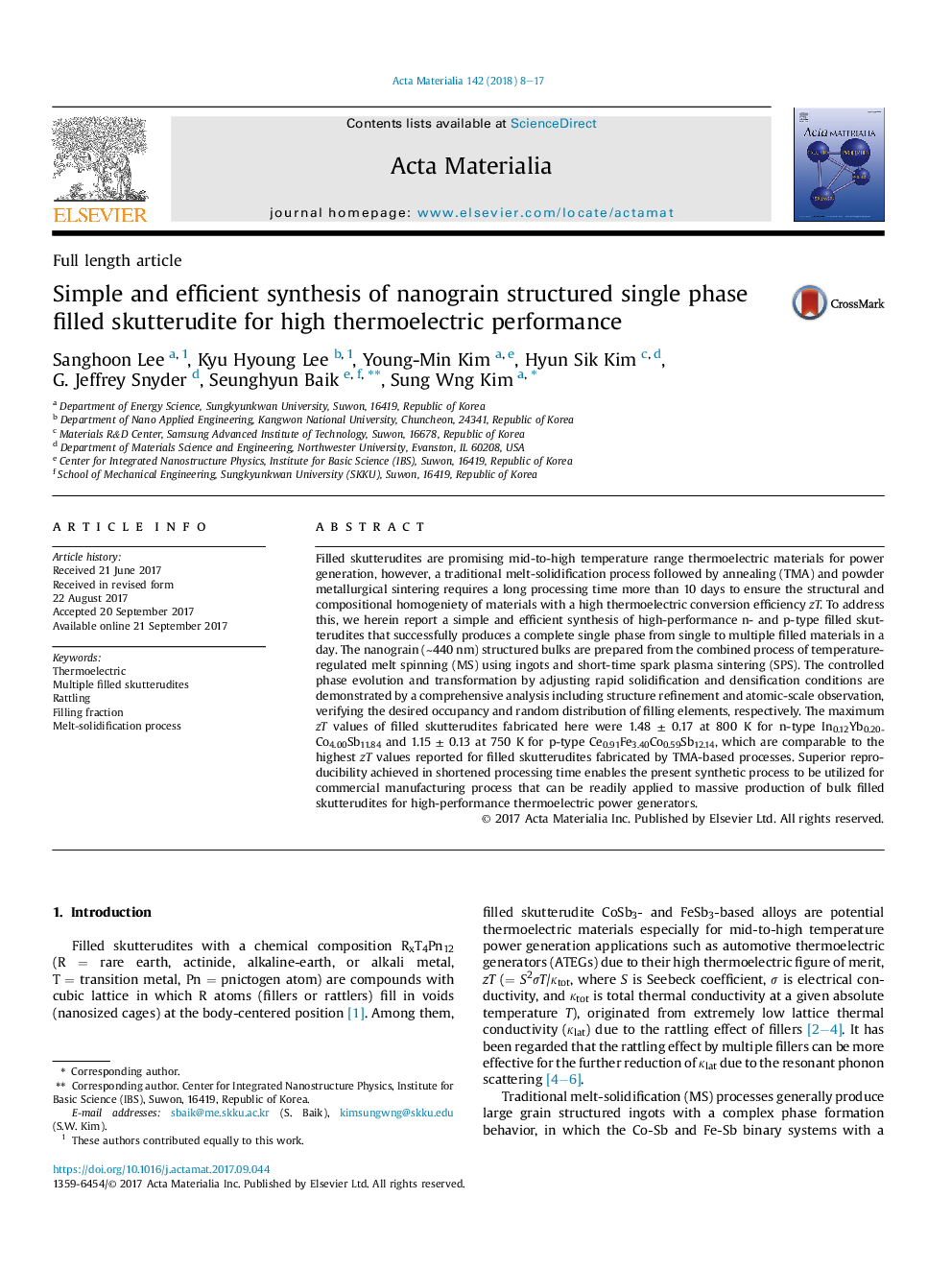| Article ID | Journal | Published Year | Pages | File Type |
|---|---|---|---|---|
| 5435689 | Acta Materialia | 2018 | 10 Pages |
Filled skutterudites are promising mid-to-high temperature range thermoelectric materials for power generation, however, a traditional melt-solidification process followed by annealing (TMA) and powder metallurgical sintering requires a long processing time more than 10 days to ensure the structural and compositional homogeniety of materials with a high thermoelectric conversion efficiency zT. To address this, we herein report a simple and efficient synthesis of high-performance n- and p-type filled skutterudites that successfully produces a complete single phase from single to multiple filled materials in a day. The nanograin (â¼440 nm) structured bulks are prepared from the combined process of temperature-regulated melt spinning (MS) using ingots and short-time spark plasma sintering (SPS). The controlled phase evolution and transformation by adjusting rapid solidification and densification conditions are demonstrated by a comprehensive analysis including structure refinement and atomic-scale observation, verifying the desired occupancy and random distribution of filling elements, respectively. The maximum zT values of filled skutterudites fabricated here were 1.48 ± 0.17 at 800 K for n-type In0.12Yb0.20Co4.00Sb11.84 and 1.15 ± 0.13 at 750 K for p-type Ce0.91Fe3.40Co0.59Sb12.14, which are comparable to the highest zT values reported for filled skutterudites fabricated by TMA-based processes. Superior reproducibility achieved in shortened processing time enables the present synthetic process to be utilized for commercial manufacturing process that can be readily applied to massive production of bulk filled skutterudites for high-performance thermoelectric power generators.
Graphical abstractNanograin structured single phase filled skutterudites are synthesized by combined process of temperature-regulated melt spinning and short-time spark plasma sintering in a day with high reproducibility without nanoinclusions or nanoprecipitates. The maximum zT values are 1.48Â at 800Â K for n-type In0.12Yb0.20Co4.00Sb11.84 and 1.15Â at 750Â K for p-type Ce0.91Fe3.40Co0.59Sb12.14 which are comparable to the highest zT values compared with conventional melt spinning processes.Download high-res image (247KB)Download full-size image
